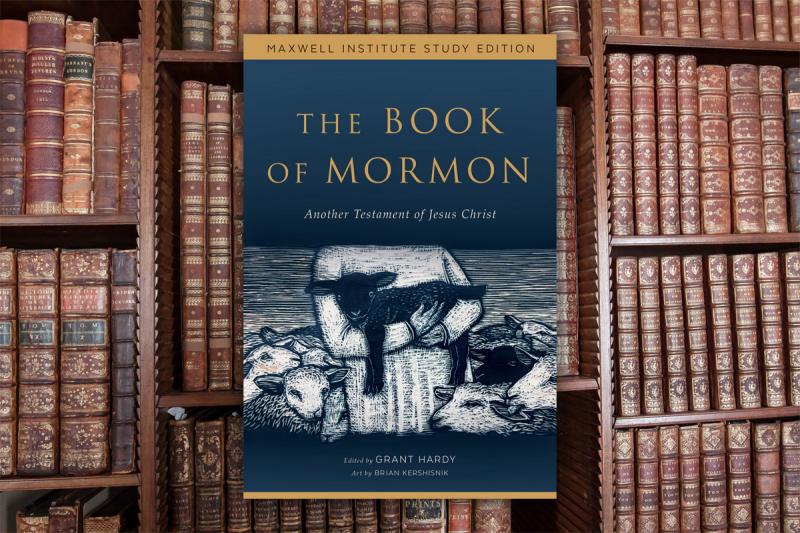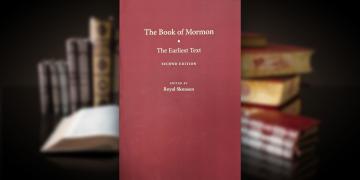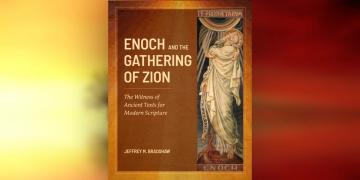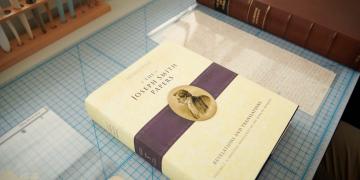You are here
Book of Mormon Central is in the process of migrating to our new Scripture Central website.
We ask for your patience during this transition. Over the coming weeks, all pages of bookofmormoncentral.org will be redirected to their corresponding page on scripturecentral.org, resulting in minimal disruption.
You’ve Never Read the Book of Mormon like this: New Study Edition Now Available
The Neal A. Maxwell Institute for Religious Scholarship at BYU recently teamed up with Latter-day Saint scholar Grant Hardy to produce The Book of Mormon: Another Testament of Jesus Christ, Maxwell Institute Study Edition, co-published with Deseret Book and the Religious Studies Center at BYU. This new edition of the Book of Mormon uses (with permission) the official 2013 version of the Book of Mormon text, produced by the Church of Jesus Christ of Latter-day Saints, but makes several adjustments to its presentation and formatting to enhance the reading experience.
Features
The text is arranged in paragraphs (or, as appropriate, parallel lines and poetic stanzas) that help the reader get a better sense of the narrative or logical flow of the text. Headings and sub-headings help guide the reader along and break the text into easily readable, but fully coherent blocks of text, and the original 1830 chapter divisions have been added to help readers follow the larger thematic and narrative arcs of the original authors.
The verse numbers have been superscript, to still aide the reader following along in Sunday school or a seminary, institute, or religion class at BYU, but they’ve been reduced to be less intrusive on the narrative. When authors interweave biblical quotations into their speeches and discourses, bolded text is used to make those quotations readily identifiable. When a large block of biblical text is being quoted, such in the Isaiah chapters of 2 Nephi, or the Sermon at the Temple in 3 Nephi, bolding is used to highlight differences from the King James Version of the Bible.
Footnotes are used to:
- Alert readers to connections to other passages, both within the Book of Mormon itself and to biblical passages from the Old and New Testaments.
- Notify readers of variant readings from the original and printer’s manuscript, earlier editions of the text, along with plausible conjectural emendations based on the Critical Text Project by Royal Skousen.
- Chronological information, to help readers follow the timeline of events
- Occasional explanatory information that helps readers understand different features of the text

While explicit commentary throughout the text is sparse, there are some excellent resources in both the front and back of the book to assist readers in their study. In the front, alongside the testimonies of the three and eight witnesses is also the testimony of Emma Smith, who felt and moved the plates under a cloth covering. Hardy also provides a brief, but helpful, history of the Book of Mormon text, with a short list of additional scholarly resources.
In the back, Hardy provides various maps and charts, a number of statements from Joseph Smith on the Book of Mormon, a series of notes addressing key topics, such as anachronisms, chronology, geography, translation, witnesses, and more. The back also includes a helpful essay on literary parallelism in the Book of Mormon, and an index of names.
In addition to these formatting features, this edition includes more than 20 evocative woodcut images from Latter-day Saint artist Brian Kershisnik, usually placed at the beginning of each book. These images add a beautiful visual component that helps the reader ponder on key scriptural stories.
Why you should try reading this edition of the Book of Mormon
While many readers of the Book of Mormon are used to studying the Book of Mormon on the Gospel Library App, trying a different, printed edition of the Book of Mormon can be an exciting and instructive opportunity for gospel learning. Reading the Book of Mormon with a different format and page layout can help readers look at old scriptures with new eyes. Different doctrines and messages will come alive with verses grouped together in meaningful paragraphs. New pieces of inspiration and insight can be found as readers study the footnotes and supplementary material.
Overall, the Maxwell Institute Study Edition manages to enhance the Book of Mormon reading experience without getting in the way. It is Mormon’s text, with its witness of Jesus Christ—not Hardy’s personal commentary or insights—that shines through. BYU students who used an earlier version of this study edition in class “reported feeling more engaged and focused on the scripture’s content as they read, and that their study habits improved as they were able to read for longer blocks of time and with greater comprehension, all of which made them more eager to read each day.”
See the Maxwell Institute website for more information and purchasing options.
Editor Grant Hardy, and artist Brian Kershisnik will be giving a joint lecture on January 25 on BYU Campus.
Subscribe
Get the latest updates on Book of Mormon topics and research for free








